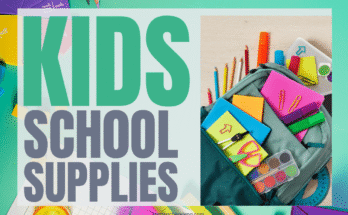When you think about literacy, what comes to mind? The ability to read and write? The ability to use language in a variety of ways?
I’m sure you’ve heard this before, but learning happens. Children learn from the moment they are born. They learn how to walk, how to speak, and how to interact with others. And yet, as adults and teachers, we often forget that learning is an ongoing process for children.
Theories of learning are critical to improving early literacy development in young children because understanding children’s first experiences with literacy provides valuable information about their future success as learners. If we want our children to get ready for school and become lifelong learners, we must understand the theories of learning so that we can help children learn in a way that works best for them.
Definitions of Emergent Literacy
What exactly is emergent literacy? Where does it come from and how can it help us in our daily lives as educators working with young children?
Here’s how theorists define emergent literacy.
Marie Clay
- first one who used the term emergent literacy
- Emergent literacy is based on an assumption that a child requires some knowledge about language, reading, and writing even before attending any formal education.
- asserted that literacy development begins in early life and is ongoing
Teale
- described emergent literacy as the early signs of reading and writing demonstrated by young children, even before they begin to take formal instruction in reading and writing, and such signs and ways are recognized by early adults
- viewed literacy as the result of children’s involvement in reading activities facilitated by literate adults
- the concept of emergent literacy suggests that all children who come to school already have certain experiences and interests in learning
Sulzby
- defines literacy as the reading and writing behaviors of young children that precede and develop into conventional literacy
Who are conventional readers and writers?
Emergent literacy refers to all of the actions, understandings, and misunderstandings of learners engaged in experiences that involve print creation or use (Koppenhaver & Erickson, 2003, p. 283).
Conventional literacy refers to reading and writing that follow the form, content, and use of standard conventions (Koppenhaver, 2000).
It is built on discoveries and understandings made during the emergent literacy phase of development.
A student is moving towards a more conventional understanding of literacy if they: know most of the letters most of the time engage actively during shared reading have a means of communication and interactions understand that writing involves letters and words
Transitions on the Perspectives of Emergent Literacy
Change has always defined literacy.
Change defines literacy instructions.
These transitions are marked by:
Basic Literacy
Emphasizes the reading and writing of young learners to construct meaning for themselves.
Socio-cultural Literacy
Emphasizes the importance of social interaction of children to construct cultural-specific meanings and to demonstrate literacy practices as social events and cultural phenomena.
Functional Literacy
Emphasizes the use of technology for instruction and literacy, and the young learners’ use of technology to produce meaning
While there are many theories on how children learn, It is important to remember that there is no one learning theory that encompasses all children. Children develop differently and therefore respond to development differently.
If you’re looking for more resources about professional education, then make sure to browse my page.



